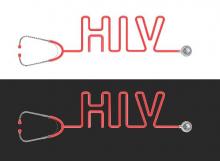HIV/AIDS mortality has been declining at a steady pace since 2005, but the annual rate of new infections has remained relatively constant in that same period, according to a study published July 19 in the Lancet HIV.
The analysis, based on data from the Global Burden of Disease 2015 study, provides national estimates of levels and trends of HIV/AIDS incidence, prevalence, coverage of antiretroviral therapy (ART), and mortality for 195 countries and territories from 1980 to 2015. The authors, led by Haidong Wang, PhD, of the Institute for Health Metrics and Evaluation at the University of Washington, Seattle, used the Estimation and Projection Package and Spectrum software originally developed by the Joint United Nations Programme on HIV/AIDS (UNAIDS) to make their estimates.
Dr. Wang and his coauthors revealed that HIV/AIDS mortality declined from a peak of 1.8 million deaths in 2005, to 1.2 million deaths in 2015. However, they noted that the annual incidence of global HIV/AIDS has stayed relatively constant at about 2.6 million per year (range, 2.5 to 2.8 million) since 2005. The number of people living with HIV/AIDS has been steadily increasing and reached 38.8 million in 2015, thanks in great measure to the scale-up of ART and the prevention of mother-to-child transmission, the coauthors said.
The proportion of people living with HIV on ART increased rapidly between 2005 and 2015, from 6.4% to 38.6% for men, and from 3.3% to 42.4% for women, but Dr. Wang and his colleagues said most countries are still far from achieving the UNAIDS 90-90-90 target of 81% by 2020.
Read the full study in the Lancet HIV (doi:10. 1016/S2352-3018[16]30087-X).
On Twitter @richpizzi


